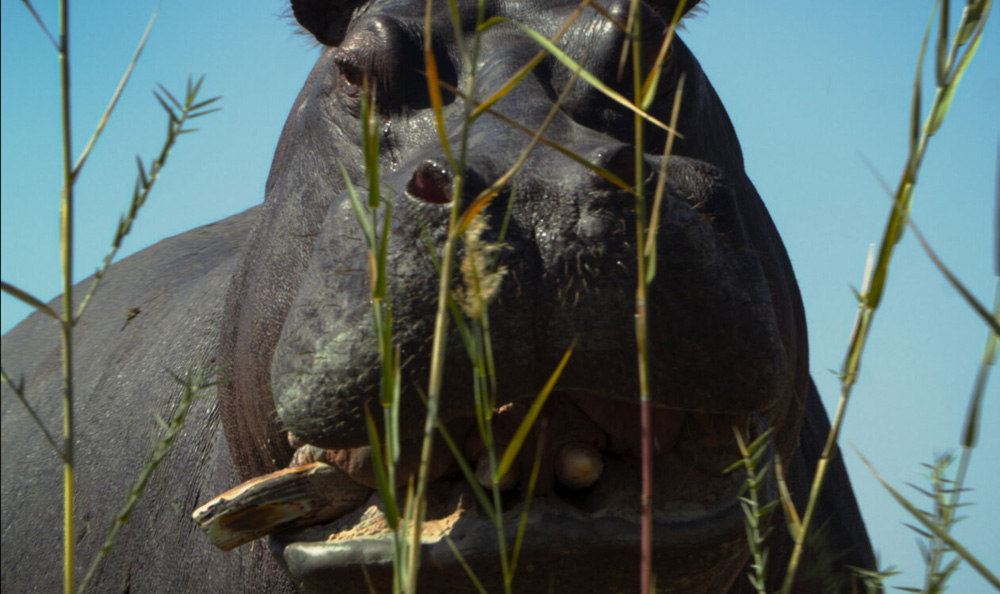Nelson Carlo de Los Santos Arias couldn’t help but be drawn in by the same logline that attracted so many others to his latest film “Pepe,” the irresistibly lurid story of a hippo among the belongings of Pablo Escobar that was left to fend for himself once the drug kingpin’s compound was raided. However, the director who previously had used a sheath of criminality for a much more provocative investigation in his 2017 feature “Cocote,” in which a man unravels at the thought of his father’s murder at the hands of a local mobster, wondering if a call to vengeance actually my be in line with his deeply held religious beliefs, thought following Pepe throughout his travels across the Rio Magdalena River in Colombia to Okavango River in Southwest Africa could lead to something more interesting. That was borne out once he actually hit the trail.
“Once I shot those territories, the material spoke to me in a very firm way,” de Los Santos Arias recalls. “And I remember having some shots after and [thinking] I already have my film. I don’t need this. But [the time to shoot] was already scheduled and we shot [more].”
True to its dazed protagonist, a focus is slow to emerge in “Pepe” as radio dispatches recount disarray around the island Escobar made his home in its opening moments and the sound of gunfire can be heard in the background, but it isn’t long before a gravelly voice emerges, asking “What did I do to be dead?” The search for answers opens up plenty of questions as de Los Santos retraces Pepe’s passage from Africa to Colombia, sometimes suggesting you’re seeing the world through the eyes of the hippos and other times from an entirely other point of view out of a realm of human perception, but what snaps into sharp relief is an understanding of what you’re ultimately taking in as the filmmaker brilliantly dismantles one way of looking at the world to see it with a fresh pair of eyes.
As the film itself strays away from what’s within the hippo’s immediate sightline, “Pepe” evolves into a fascinating look at colonization as it chronicles the hippo’s own relocation due to forces of its control, physically attempting to find a place to rest in peace as the lens of a restless camera drifts towards other species, including humans, that are more susceptible to which way the wind blows than those holding power, and the unorthodox angles on the action shows the grip that more traditional narratives have had over the public’s imagination, reinforcing the preexisting structures in place that have prevented upward mobility. If there’s hope to be taken away from “Pepe,” it’s that such a bold, original vision has found its way through the system itself, making a splash upon its premiere at Berlinale last year before buzz only grew in the months to follow. After the film recently made its way onto MUBI, de Los Santos Arias graciously took the time to talk about how he located a sensual story inside a sensationalized narrative, how he finds his films in the process of making them and the search for perspectives outside his own.
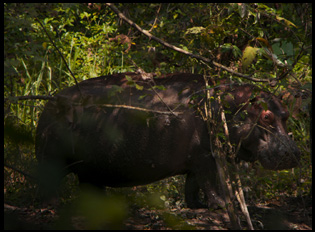
Yes. I was in my friend Camilo Restrepo’s house and he had this little sculpture of a hippopotamus looking at almost a thousand plastic soldiers. We used to play with [these soldiers] and when I grew up, I understood that it was the U.S. Army, which I found completely disturbing. This is when he tells me the story [of Pepe] and what struck me of the story was the biological mistake that [led to his exile] because when two males fight, the one that loses, [Camilo] told me that he was going to have to be exiled off the herd and look for another herd. But [Pepe] was looking for another herd that doesn’t exist because it’s not in the African continent, and that was what struck me. In real life, this is how they expand in the territory. And this is what opens all the ideas that started to come out after [hearing] that story.
What was it like to go to these places and process them for yourself as you’re putting together a storyline for this?
I would like to think that I’m doing more than to approach a territory, a community, or a subject that has been filmed through the lens only of cinema. I try to introduce a more ethnographical or anthropological [approach]. So sometimes I make decisions for an anthropological reason and these territories that you see are the territories [where] the historical [events] happened. The film tells the story of Africa, of a kidnap [and includes] things that are not real — it’s just part of the fable — but that can allow other elements of the mis-en-scene that will represent veracity. It’s very hard for me to make a film talking about something and shooting in another place.
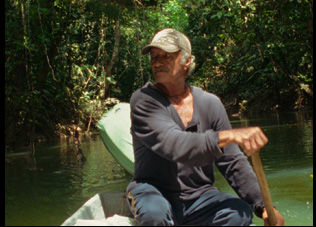
That’s what makes your film special. Is it true Pepe’s monologue was what first came to you? How did that give shape to the rest of this?
It came in the early [stages] because [Pepe] was the important character in my film. It was also the challenge because it would put in a voice of something that doesn’t exist or things that cannot happen, so the writing of the voice, but most important the sound of that voice, was something that I would have to understand from very early in this process that could work. I cannot just enter a project [without a bedrock like that] and always in my films, there are things that are very complicated and the first thing to know is if this is possible to try to resolve those tasks. Not with the producer or the crew but myself because it has to do with me as a maker.
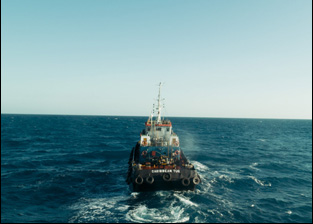
There were very different [styles] of shooting in order for me to have this [perspective in the film]. As a practical decision in production, I needed to separate what is artifice and what was somehow a search [in the composition], but not in the form of understanding [the subject] as many films operate. You can see it in the way that there are edits in the end. There’s no separation in the image, just because of the mode of production changes. This is my way to design a mode of registration of production that will take me to those parts that are necessary for the film of Pepe. If Pepe has this chameleonic form of existence like all my other films, the structure is the result of a process that includes a shot [composition] more in line with what [production] we understand [already], but also a shot [composition] that is searching for the poetics of this film. They have to coexist and create a sense of diversity that we have in this world.
From what I understand, you started thinking about sound a lot earlier in the process than your previous work. How did it change your approach?
I was thinking about hybridity, because when I was started making films how I do, you learn things about yourself from everybody who sees your film. You’re just doing things and you become aware. So from the beginning of my films, I was just hearing this word “hybridity” or some people will even call it a jazz cinema when they were referring to “Cocote,” and in this film, I actually took it seriously. [I asked myself] What is this to be a hybrid film that they are calling it, especially the Anglo-Saxon media? I think it’s something that has to do with the language in itself. It’s important to categorize to understand it. So I was thinking about that, and I decided because sometimes decisions in cinema are related to the technique of doing cinema and all the investigation that I do is to understand the characters, I wanted to start experimenting in making the soundscape of this film. Let’s introduce how this world sounds, and [see] what that will do to my writing because writing is just words. I remember moments of writing with a certain type of sound, experimenting in the process in itself.
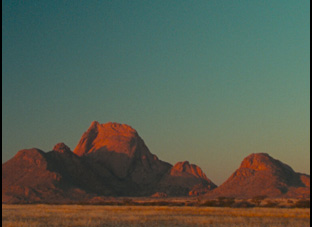
There’s a [broad] answer to that, and it is that we artists, especially coming from different backgrounds — and within those, different regions [particularly] within the global south [where some] will be more privileged than others — have these hierarchies of privilege and [to see it received well] gives you a little bit of calm and when you get a prize and all that, it means I can that I can continue to make films. Even with fragile cinema laws [against] rising of the of this anarchocapitalists that want to cut all the public funding, those prizes keep you in the battle for existence [in a practical way]. But in a more personal way, it’s [made me realize] when I go for my desire, I do better in life. This is an example of that. I went for my desire in a film like this and it went well, [so it’s successful] not because of the prize, but to me.




